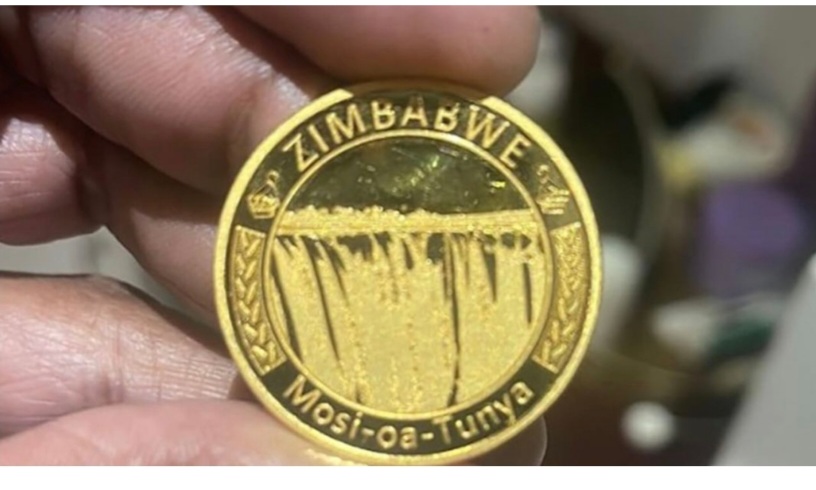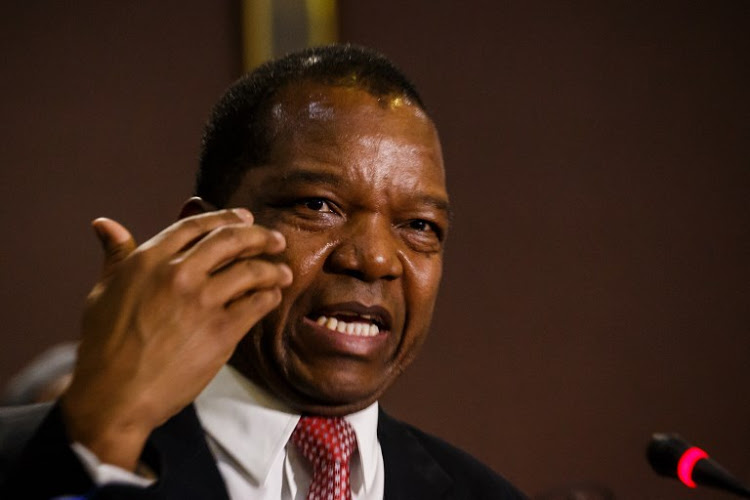BY LESLEY WROUGHTON
With inflation soaring in Zimbabwe and the country’s currency in free-fall as people abandon it for the United States dollar, the government of President Emmerson Mnangagwa is fighting back with a novel strategy: gold coins.
Starting Monday, Zimbabwe is selling one-ounce, 22-carat gold coins bearing an image of Victoria Falls, its world-famous natural wonder.
Each has a serial number, comes with a certificate and will be sold at a price “based on the prevailing international price of gold and the cost of production,” the central bank said in its announcement on July 4.
The coins will be tradable both in Zimbabwe and overseas, the bank said, and can be exchanged for cash.
The goal is to reduce the quantity of Zimbabwe dollars in circulation to eventually restore its value.
What’s unknown is whether the approach has any real chance of success.
While gold is traditionally the ideal hedge against inflation and general economic uncertainty, no country has previously tried to tackle a weakening currency by selling gold coins.
“In that sense, it is unusual,” said Carlos Caceres, the International Monetary Fund’s representative to Zimbabwe.
And with gold trading at US$1,710 per troy ounce late last week, institutional investors may be the coins’ principal buyers.
“No ordinary person will be able to afford it,” said Prosper Chitambara, a senior researcher at the Labour and Economic Development Research Institute of Zimbabwe.
“Right now, Zimbabweans are living hand-to-mouth.

Economic crises are nothing new to people in the southern African nation, who for more than two decades have faced hyperinflation, food and fuel shortages, staggering unemployment and other hardships.
For many, the current crisis recalls the late 2000s under then-president Robert Mugabe. Annual inflation hit a record 489 billion percent in September 2008, and shoppers carried garbage bags full of bank notes to buy groceries.
Mugabe’s government was forced to print a trillion-dollar note, the largest in world history, before the country abandoned its currency in 2015 for the US dollar.
Mugabe was forced to resign in 2017, and the Zimabwe dollar, as it is known, was reintroduced two years later. But as confidence in it again falls, Finance minister Mthuli Ncube has warned that businesses refusing to accept the currency from customers could lose their trading licenses.
This year the Zimbabwe dollar has already lost roughly 72 percent of its value against the US dollar.
Annual inflation reached triple digits in May, climbing again in June to 192 percent even as interest rates more than doubled — to 200 percent from 80 percent.
Chitambara said the government wants sales of the gold coins to moderate high demand for US dollars, a key factor in the local currency’s depreciation.
If that happens, in turn reducing some of the excess money supply and easing inflationary pressures, “then it would’ve been a positive experiment,” according to Caceres.
Still, Caceres said, the IMF prefers tried-and-tested tools as it advises member countries on best economic policies.
When confronting both inflation and a weakening currency, such tools include raising or cutting interest rates to control inflation and tweaking the amount of money that banks must set aside as reserves.
Most of Zimbabwe’s inflationary pressures emanate from its currency troubles.
But rising prices are also being fueled by Russia’s invasion of Ukraine, which has sparked a global wave of inflation amid supply shortages of grains and fuel.
On the streets of the capital city of Harare, there isn’t much chatter about the new coin — the Mosi-ao-tunya, the traditional name for the Zambezi River waterfall. It translates to “the smoke that thunders.”
Vendor Trust Muyererwa is focused on his increasingly difficult day-to-day life.
“In January, I would pay $10 U.S. to buy a pack of mealie meal, cooking oil, sugar, and salt and this would push me through the month,” said Muyererwa, 28.
“Now, a bottle of cooking oil costs $5 U.S., and I cannot buy much more” with the remainder.
Many people survive via a parallel, illegal market, with currency traders waiting on street corners and outside shopping centers waving bundles of US dollars as well as Zimbabwe dollars.
Teachers and nurses went on strike in June and demanded that half their salaries be paid in US dollars to offset the tumbling local currency.
Retailers often are raising prices every other day, and more of them are starting to quote prices in US dollars.
The Zimbabwe central bank last month offered bakers access to foreign currency to keep down the price of bread.
Hilda Musungu (33) has started charging US dollars for the traditional meals she sells from her sidewalk stand because “no wants the Zimbabwean dollar anymore.”
“Last December, $200 US was enough for me to buy food packs to sell the whole day,” she explained.
“The cost has climbed to $270 U.S., and she has increased her own prices in turn.
“Sadly, fewer people are now coming to our place.” – The Washington Post
*Bernard Mpofu in Harare contributed to this report.


 Slider3 years ago
Slider3 years ago
 National4 years ago
National4 years ago
 Tourism and Environment4 years ago
Tourism and Environment4 years ago
 Opinion4 years ago
Opinion4 years ago
 Special reports4 years ago
Special reports4 years ago
 National4 years ago
National4 years ago
 National3 years ago
National3 years ago
 National3 years ago
National3 years ago



